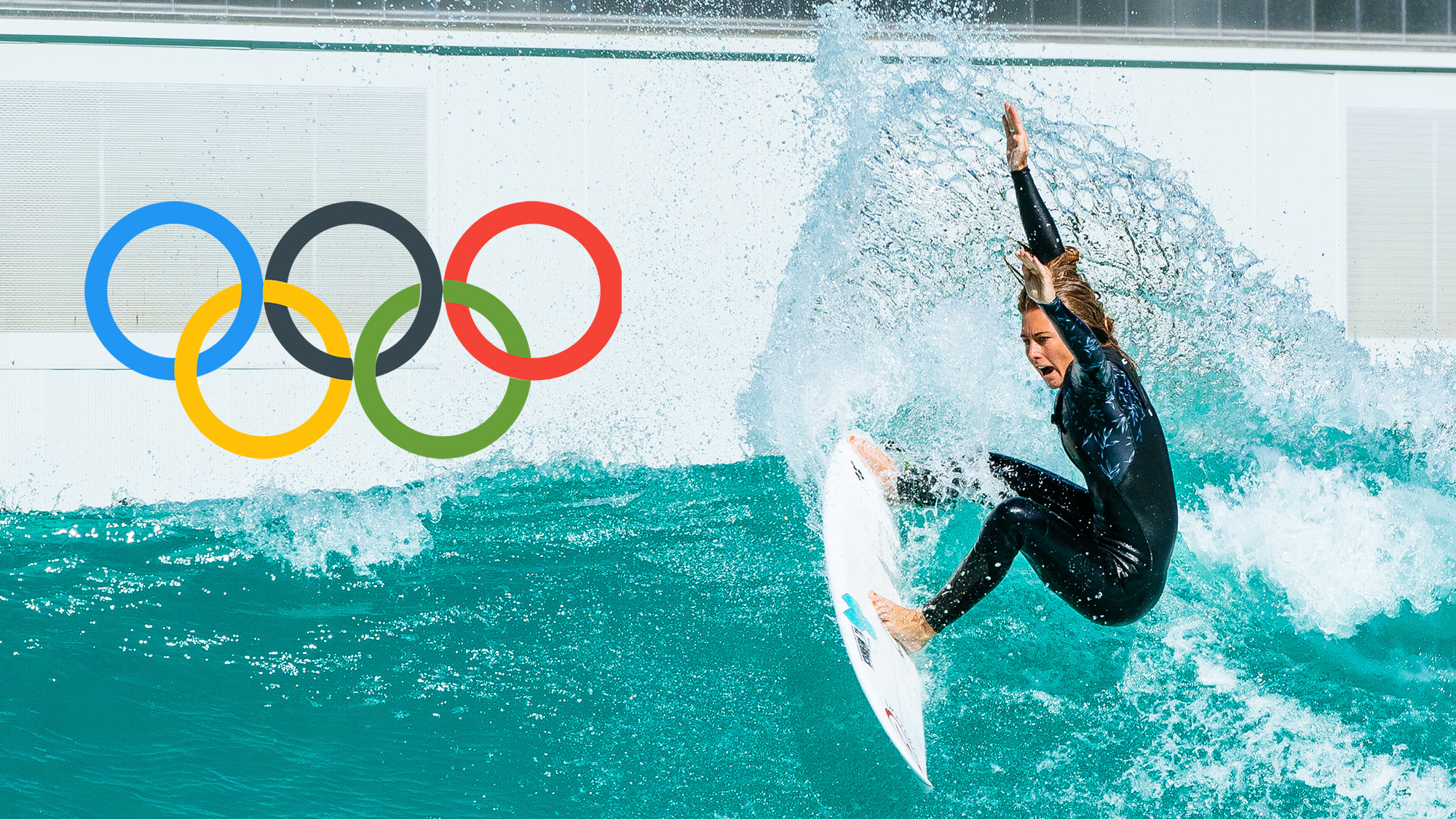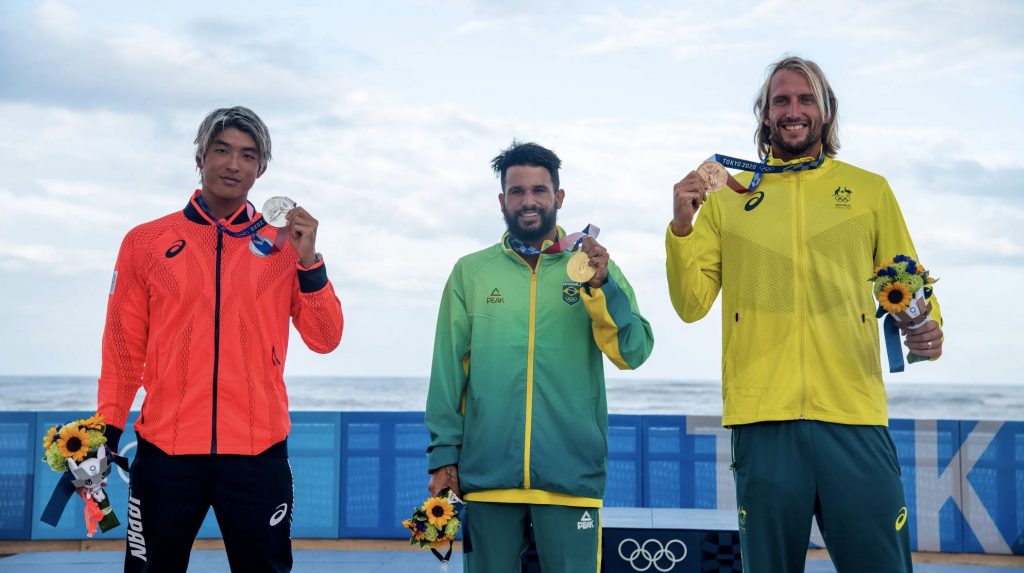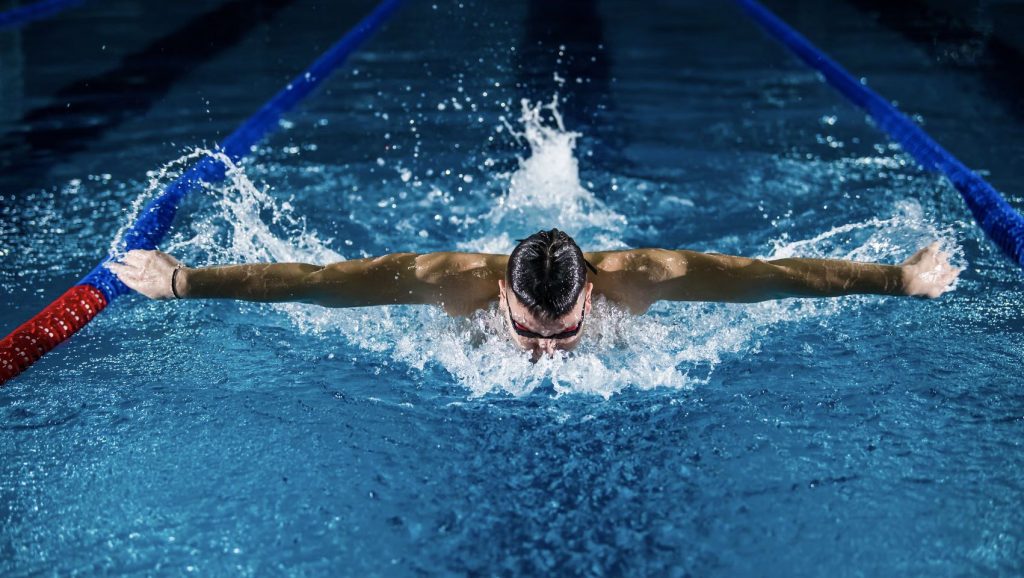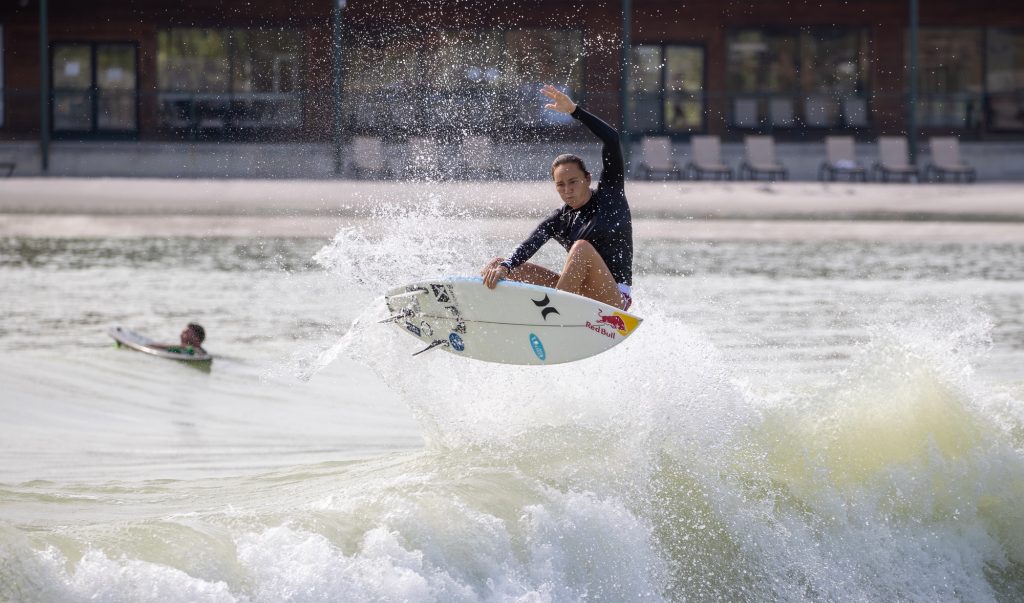The real reason wave pools haven’t been and won’t be in the Olympics

Remember those raging debates about which wave pool should be used in the Olympics? Back when the venue for surfing’s Olympic debut was still up in the air, everyone had an opinion on a wave pool’s role in the Games and which technology would work best.
Now as we head into the Paris 2024 Olympic cycle where the world-renowned Teahupo’o has already been selected as the venue, those conversations have whittled down to a muffled murmur.
Why?
Well, for starters, surfing in the ocean at Tokyo 2020 went surprisingly well and no one is going to argue against the decision to compete in Tahiti in 2024. Plus, 2028 and 2032 will be held in Los Angeles and Brisbane, respectively, both venues with strong surf culture and no-brainer ocean venues.
The pre-Tokyo 2020 momentum that the wave pools had to play a role in the Games seems dead in the water.
Despite the enthusiasm of many to push for their use in the Olympics, the reality is that the wave pool idea never gained any real traction with those who mattered most: The International Olympic Committee (IOC).
Even though the International Surfing Association (ISA) originally proposed the use of wave pool technology in their original presentations to the IOC and Tokyo 2020, the idea of wave pools had a lot of obstacles working against it.

When reached out for comment on this story the IOC downplayed their role and suggested that the decision to not use a wave pool “was a proposal from the Organising Committee Tokyo 2020.” And at the time of publishing, the Tokyo 2020 Organizing Committee, which has mostly ceased to exist, unsurprisingly has not responded for comment.
Regardless of who killed the idea, the true source of the death of the wave pool was the IOC’s Agenda 2020.
Agenda 2020 was a series of sweeping reforms approved in 2014 that was spearheaded by the then recently elected IOC President Thomas Bach. Long story short, the topline objectives of the initiative were to reduce the exorbitant costs of hosting the Games and to modernize the program with more youthful sports.
The youth-oriented sport of surfing was a homerun under this new framework, however, wave pools were not.
Legacy: No more white elephants
The Olympics had repeatedly run into problems with the legacy left behind in host cities.
Host cities were splurging on the grandiose infrastructure required to run the events, but many of these structures were abandoned and of little-to-no value once the Games left town.
From Sochi to Rio to Beijing, the Olympics had acquired a bad rap for creating useless structures that were bound to decay and turn into ghost towns.
That’s not exactly great marketing to convince potential future host cities to open their wallets. Agenda 2020 sought to nip this problem in the bud.
Accordingly to the IOC itself, 15% of permanent Olympic venues used between 1896 and 2018 are not in use today.
Under pressure to cut down on these white elephant construction projects, building something as novel as a wave pool was apparently not at the top of the IOC’s to-do list.
At a time when the IOC was playing it conservatively, why put all your eggs in the wave pool basket when the sport already had a half-century track record of competition in the ocean?
The truth is that at the time no wave pool was proven to be an economically viable project to stand on its own two feet, something that the Tokyo 2020 organizers were cognizant of. Even before surfing was officially Olympic, Tokyo 2020 made it clear that if surfing were to be included, it would take place in an ocean venue.
Strike one for wave pools.

Colossal costs
One of the main points of Agenda 2020 was to make the Games more affordable. At the end of the day, the Olympics cannot exist without a positive bottom line, so this is probably what was most heavily weighted by the IOC and Tokyo 2020.
The costs had been increasingly becoming more gargantuan and limiting the number of cities (if any) that could potentially foot such a bill.
The Rio 2016 Games cost the organizers USD $13.7 billion, an astounding 352% over the original budget.
According to a report by CNN, Kelly Slater’s pool in California cost about USD $30 million to build. But surely the true cost for an organizer of the Games would be much greater when you factor in a plethora of secondary costs like acquiring land, maintenance, staff, etc.
Again, at a moment when the Games were facing pressure to cut costs, an expensive wave pool experiment unsurprisingly did not become their top priority.
As ISA President Fernando Aguerre told Beachgrit in 2016, first the wave pool “must have a proven business sustainability model” before it would be adopted.
Strike two for wave pools.

Universality: Equal access to the pool
Universality is the ethos of the Olympics. The idea is to create a system that includes as much of the world as possible.
It’s for this reason that you saw 18 countries qualify for surfing at Tokyo 2020 – not just a lopsided lineup of Americans, Australians, and Brazilians. The Olympic qualification systems of each sport are designed to give all continents representation.
Would it be fair to host an event in a wave pool when not all surfers vying for the Olympic slots have equal access to train in a wave pool? As it stood, wave pool competition certainly favored the surfers who are lucky enough to live near one of the few training grounds, which were overwhelmingly located in wealthy countries.
Strikes one and two were plenty of reasons for the IOC to make up its mind, but this third strike surely didn’t help the cause.
Is there a future for wave pools in the Olympics?
Aside from the three issues mentioned, there is certainly a myriad of other factors that further complicate the matter.
In a time when the Olympics is trying to become more sustainable, does it make sense to develop on virgin land, especially when the alternative is to use a sustainable, infinite resource like ocean waves?
What about the qualification system? Would all qualifying events also have to be held in a pool? Are the best surfers in the ocean also the best surfers in a pool?
And at the end of the day, the product of the Olympic Games is driven by the demand of the consumers. That’s what made surfing such a desirable addition in the first place. If the consumer demand for wave pools existed and would lead to increased viewership (aka more sponsorship revenue), the IOC would find a way to make it work. But such demand simply does not exist. Why force it?
Pre-Tokyo 2020 was undoubtedly the best chance (even if only a slight chance) that wave pools had to work their way into the Games. After all, wave pools had the support and push from the ISA. The international federations don’t make venue decisions, but they certainly have the IOC’s ear.
As it turned out, the years of worrying about the lack of waves at Tokyo 2020 turned out to be a non-issue. While conditions were not ideal, there was plenty of power in the ocean to allow the surfers to perform. And now with a 10-year runway of the world-class surf venues that are Tahiti, Los Angeles, and Brisbane, no one seems to be worried about reinserting wave pools into the conversation.
Still, before wave pool believers lose hope, I wouldn’t completely give up just yet.
Just as when Kelly magically unveiled a dream pool in 2015, technology can advance in the blink of an eye.
As they stand, wave pools are not a fit for what the IOC is looking for, but who is to say five years from now there couldn’t be a technology that is irresistible? Something the IOC can’t say no to.
What if a new technology emerged? Imagine a pool that is cheaper, less impactful on the environment, more exciting than the ocean, and proves to be economically viable in the long term.
It’s hard to imagine such a pool right now, but it was also hard to imagine placing calls on our iPods 20 years ago. Things change.
The wave pool as we know it likely will never become Olympic, but who’s to say that such a pool can’t be created in the future? Only time will tell.
Related Coverage
